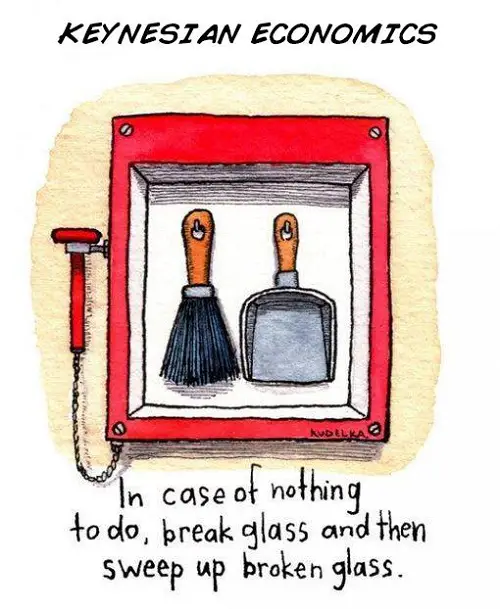
Introduction
At the heart of economic systems lie two prominent models: the free market economy and the mixed economy. While they may seem divergent in their approaches, a closer examination reveals surprising similarities that contribute to their resilience and adaptability in various global contexts.

Historical Roots
The historical roots of both free market and mixed economies can be traced back to the evolution of economic thought. The concept of a free market, where prices are determined by supply and demand with minimal government intervention, finds its intellectual foundations in the works of economists like Adam Smith. On the other hand, mixed economies draw inspiration from a blend of economic philosophies, incorporating elements of both capitalism and government intervention. The historical journey of these economic systems mirrors the ebb and flow of ideologies, responding to the needs and challenges of societies over time.
Private Ownership and Entrepreneurship
A fundamental similarity between free market and mixed economies lies in the recognition of the importance of private ownership and entrepreneurship. In a free market, private individuals or businesses have the autonomy to own and operate enterprises, fostering innovation and competition. Similarly, mixed economies embrace the concept of private ownership while acknowledging the necessity of certain regulations and interventions to address market failures and promote fair competition. This shared emphasis on the role of private entities as engines of economic growth forms a cornerstone of both systems.
Market Mechanism
The reliance on market mechanisms for resource allocation is another commonality between free market and mixed economies. Both systems recognize the efficiency of markets in allocating resources based on consumer preferences and the forces of supply and demand. In a free market, this mechanism operates with minimal government interference, allowing prices to reflect the true value of goods and services. In a mixed economy, while there might be some degree of government intervention, the core concept of market-driven allocation remains intact. This shared reliance on market forces underscores a pragmatic acknowledgment of the efficacy of market dynamics in resource distribution.
Government Role and Regulation
While the degree of government involvement differs, both free market and mixed economies acknowledge the need for some level of regulation. In a free market, the role of the government is limited to ensuring the functioning of a competitive and fair market by preventing monopolies and fraudulent practices. In a mixed economy, the government’s role extends to addressing market failures, providing public goods, and implementing social policies to mitigate inequalities. Despite these variations, both systems recognize that a certain level of regulation is necessary to maintain economic stability and protect the interests of consumers and businesses.
Flexibility and Adaptability
A striking similarity between free market and mixed economies lies in their flexibility and adaptability. Both systems have demonstrated the capacity to evolve in response to changing circumstances and global challenges. Whether it’s navigating economic downturns, technological advancements, or shifts in consumer behavior, the ability to adapt is a shared strength. This adaptability stems from the inherent pragmatism embedded in these economic systems, allowing for adjustments in policies and approaches to meet the evolving needs of societies.
Incentives for Innovation and Efficiency
Incentivizing innovation and efficiency is a common goal shared by both free market and mixed economies. The recognition that competition and the pursuit of profit drive businesses to innovate and operate efficiently is a foundational principle in both systems. Entrepreneurs in a free market are motivated by the potential for financial success and market dominance. In a mixed economy, while there may be additional considerations such as social responsibility, the core incentive structure remains aligned with the pursuit of excellence and competitiveness.
Social Welfare and Safety Nets
While often associated with mixed economies, the concept of social welfare and safety nets also finds expression in certain aspects of free market economies. Both systems recognize the importance of addressing societal needs, albeit with different emphases. In a mixed economy, the government plays a more active role in providing social services and safety nets. In a free market, societal expectations and corporate social responsibility initiatives contribute to addressing social issues. The common thread here is the acknowledgment that economic success should not come at the expense of societal well-being, reflecting a shared commitment to balancing economic prosperity with social welfare.
Conclusion
In conclusion, the similarities between free market and mixed economies reveal a nuanced interplay of economic principles, governance, and societal values. While they may diverge in the extent of government intervention and the emphasis on social welfare, the shared foundations of private ownership, market mechanisms, and adaptability underscore their resilience in the face of diverse global challenges. As we navigate an ever-changing economic landscape, the synthesis of these shared principles contributes to the dynamic tapestry of economic systems, shaping the prosperity and well-being of societies around the world.
Here’s a table highlighting key similarities between free market and mixed economies:
| Aspect | Free Market Economy | Mixed Economy |
| Private Ownership | Predominantly private ownership of resources and means of production | Private ownership is significant, but some key industries may be publicly owned or regulated |
| Government Intervention | Limited government intervention in economic activities | Government intervention exists, but to varying degrees, with regulation and support for specific industries |
| Market Forces | Relies on market forces of supply and demand to determine prices and allocate resources | Market forces play a role, but there may be government interventions to correct market failures or address social issues |
| Competition | Emphasis on competition as a driving force for efficiency and innovation | Competition is encouraged, but there may be regulation to prevent monopolies and ensure fair competition |
| Profit Motive | Profit motive is a primary incentive for businesses and individuals | Profit motive is a key factor, but social welfare considerations may also influence economic decisions |
| Consumer Choice | Consumer choice is a significant factor in shaping the market | Consumer choice is important, but there may be regulations to ensure fair practices and protect consumers |
| Resource Allocation | Resources are allocated based on consumer preferences and market demand | Resources are allocated through a combination of market forces and government planning to address societal needs |
| Economic Flexibility | Greater economic flexibility and adaptability to changes in demand | Balances economic flexibility with the need for social welfare, providing stability |
| Income Inequality | Can lead to income inequality based on market outcomes | Efforts may be made to address income inequality through social programs and progressive taxation |
| Innovation | Emphasizes innovation driven by market competition | Encourages innovation, but may also have government-supported research and development initiatives |
This table outlines some of the key similarities between free market and mixed economies, highlighting areas where they share common features despite their differences.
What is a free market economy?
A free market economy is an economic system where prices for goods and services are determined by the forces of supply and demand without significant government intervention. Private individuals and businesses own the means of production, and competition plays a crucial role in shaping the market.
How does a mixed economy differ from a free market economy?
In a mixed economy, elements of both capitalism and government intervention coexist. While private ownership and market forces still drive economic activities, the government plays a role in regulating certain aspects, addressing market failures, and providing social services.
Do both free market and mixed economies recognize the importance of private ownership?
Yes, both systems acknowledge the significance of private ownership. In a free market, it’s a fundamental principle, while in a mixed economy, private entities own and operate businesses, but there may be some level of government regulation to ensure fair competition and prevent abuses.
How do free market and mixed economies handle market mechanisms?
Both economies rely on market mechanisms for resource allocation. In a free market, prices are determined by supply and demand without much government interference. In a mixed economy, while market-driven allocation is central, there might be government interventions to correct market failures and ensure fairness.
What role does the government play in a free market economy?
In a free market economy, the government’s role is limited. It primarily focuses on preventing monopolies, fraudulent practices, and ensuring fair competition. It aims to create an environment where market forces operate efficiently.
How does the government’s role differ in a mixed economy?
In a mixed economy, the government’s role extends beyond preventing malpractices. It actively addresses market failures, provides public goods, and implements social policies to ensure a balance between economic efficiency and social welfare.
Are both free market and mixed economies adaptable to change?
Yes, both systems demonstrate adaptability. They can evolve in response to changing circumstances, whether economic downturns, technological advancements, or shifts in societal values. This adaptability contributes to their resilience.
Do incentives for innovation exist in both free market and mixed economies?
Absolutely. Both systems recognize the importance of incentivizing innovation and efficiency. In a free market, competition and the pursuit of profit drive innovation. In a mixed economy, while considering social responsibility, the core incentive structure aligns with competitiveness and excellence.
How do social welfare and safety nets play a role in these economies?
While often associated more with mixed economies, both systems acknowledge the importance of addressing societal needs. In a free market, this might be through corporate social responsibility initiatives, and in a mixed economy, the government takes a more active role in providing social services and safety nets.
Can these similarities be considered strengths of both economic systems?
Absolutely. The shared principles of private ownership, reliance on market mechanisms, adaptability, and recognition of the importance of incentives contribute to the strengths and resilience of both free market and mixed economies in different global contexts.












Leave a Reply